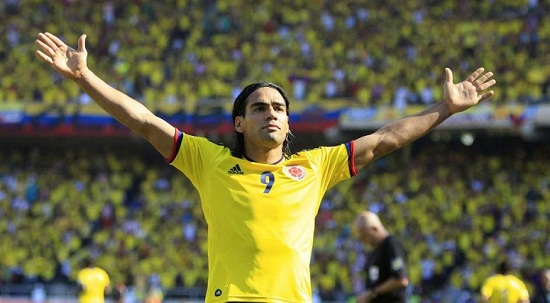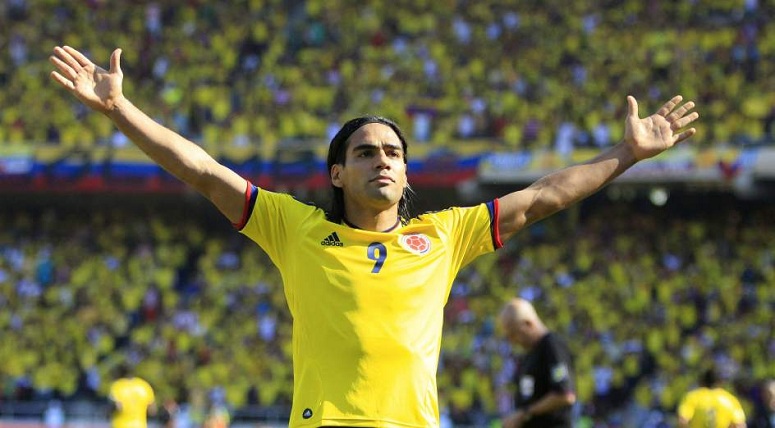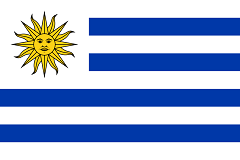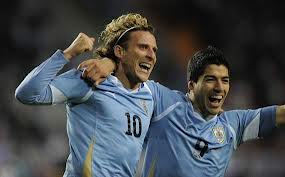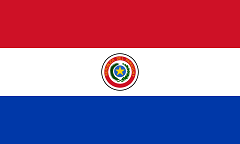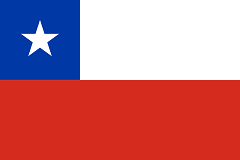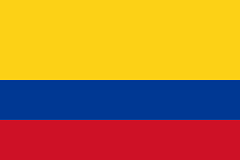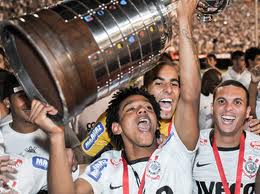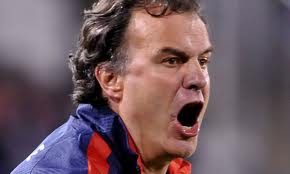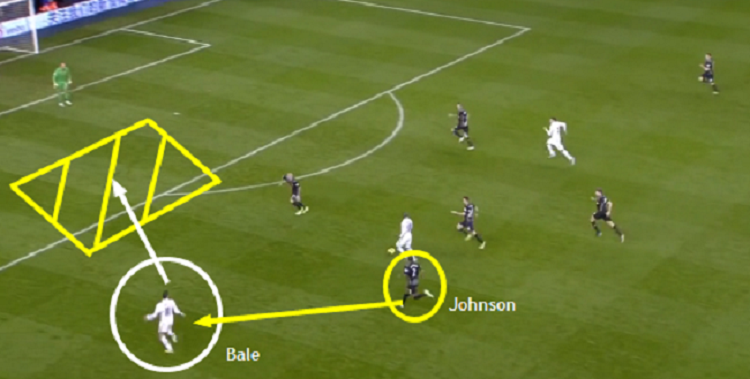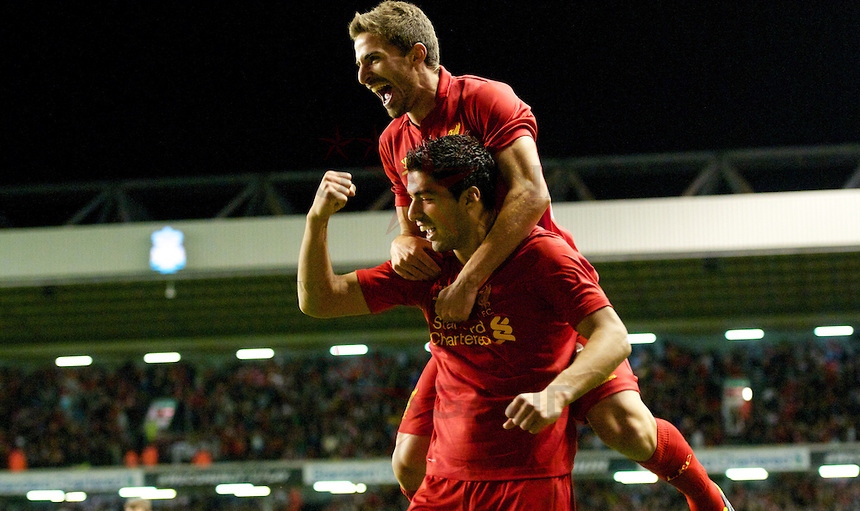The beautiful game is loved world over, but probably nowhere is it more of a passion than in South America. The region boasts of two of the most celebrated teams in international football in Argentina and Brazil, and some of the greatest players the world has known, like Pele, Maradona, Messi and Luis Ronaldo. These teams have won 7 World Cups together, and to say that football is the national passion in this region would be making an understatement of epic proportions. The on-field rivalry these two teams share is very well documented and a clash between the two often leads the rest of the world divided as well.
However, in all the frenzy that surrounds these two giants of world football, the ‘other’ teams of the continent are often ignored. These teams do not receive the same amount of column inches that the ‘Big Two’ of South America receive.
This situation is fast changing. Over the last few years, teams like Chile and Paraguay have sprung up, and Uruguay have returned to the close to the top of the world football tree. The gap between the ‘Big Two’ and the rest is fast being bridged, and this can only be good for world football. This article will focus mainly on four such teams that are currently making a huge impact on world football.
URUGUAY:
Uruguay is a team with a long and proud history. They hold the record for most official international titles won by any country with 20. These include 2 World Cups(1930 & 1934) and 2 Olympic Gold Medals(1924 & 1928). These are now recognized by FIFA as World Championships in accordance with the IOC. A record 15 South American Championships, and 1 Mudialito, a tournament played among former world champions is also part of their impressive record. What makes their success even more astonishing is that they are the smallest country in terms of population to have ever won the World Championship. While they were very dominant in the first half of the 20th Century, the second half wasn’t so pleasant, with the team’s fortunes declining.
However, since their failed bid to qualify for the 2006 World Cup, Uruguay have re-established themselves as one of international football’s top dogs with an impressive 4th place finish at the 2010 World Cup in South Africa, and victory in the 2011 Copa America, going through the tournament unbeaten. Led by a host of international football superstars, the team is characterized by a strong and organized defence which boasts of some quality players like Diego Godin, Maxi Perreira, and the talented youngster, Sebastian Coates. They also pose a constant threat in attack, where they possess forwards as dangerous and as varied as the bruising target man Edinson Cavani, the bag of tricks that is Luis Suarez and their record goal scorer, Diego Forlan. These forwards are well supplied by midfielders who ply their trade in some of the top teams of Europe, with Walter Gargano and Alvaro Pereira (both Inter Milan) and Cristian Rodriguez (Atletico Madrid) forming the core.
These vast resources are organized and utilized well by coach Oscar Tabarez, who took charge of the team in 2006. His record currently stands at 38 wins and 17 losses in 79 games, with a win percentage of 48.1%. He has also masterminded their climb in the rankings to 7th place, with a high of 2nd in June 2012. this represents tremendous improvement as they were ranked 29th before Tabarez took over in 2006.
PARAGUAY:
Paraguay is a side that hasn’t made many waves historically in world football, but is on the rise. They’ve won the South American Championships only twice in their history but reached the finals in 2011, only to be beaten by Uruguay.
The national team began making major strides towards success in the early 90’s, when a lot of talented young players like Jose Luis Chillavert, Celso Ayala, Carlos Gamarra and Fransico Arce emerged. These players were crucial in terms of paving the way for many others to follow, and qualified for the first of four consecutive World Cup appearances in 1998 where they were narrowly beaten by the hosts France in the Round of16, thanks to a Golden Goal by Laurent Blanc in the 114th minute. Eventually, new faces arrived on the scene thanks to the Paraguayan U19 team that won the ‘Milk Cup’ in 2002, 2003 and 2006. These teams brought more familiar players like Nelson Valdez and Oscar Cardozo to the fore.
The greatest period in the landlocked country’s history in terms of football came under the stewardship of Gerardo Martino who brought in organization and discipline to the Guarani’s play. He transformed Paraguay into a team that was tough to break down, and fought for every ball. It was this defensive ability that ensured their passage to the Copa America finals in 2011 without winning a single game. Apart from defensive ability, he also created a very potent attacking force, with dangerous forwards like Roque Santa Cruz, Nelson Valdez and Oscar Cardozo. Marcelo Estigarribia, one of the break-out players of the 2011 Copa, currently plying his trade at Sampdoria, was also given his opportunity by Martino. The performance at the Copa came on the back of an impressive run at the 2010 World Cup, where eventual winners Spain beat Paraguay in a thrilling encounter.
Apart from excellent performances at tournaments, Paraguay have delivered in one on one games as well, recording famous wins over the likes of Brazil and Argentina, and were also the first team to qualify from the CONMEBOL qualifiers ahead of many traditional continental powers. Martino however, resigned in 2011 after the Copa.
The team is currently ranked 38th in the FIFA rankings.
Chile:
Chile is yet another country with a history that hasn’t yielded the greatest of results, but with a current team that has the ability to compete with the best. Chile were one of the 4 founding members of the CONMEBOL, and are the only one of these four to have never won the South American Championships. Their best performance in World Cup also remains the third place finish they achieved in 1962 while hosting the tournament. The team has a chaotic football history, marred by many unsavory incidents. Even recently, a number of players were banned by the Federacion de football de Chile for 20 games for off field misdemeanors.
In recent times, and especially under the Argentine coach Marcelo Bielsa, Chile has made a lot of progress. The team doesn’t boast of a very strong defence, but the quick attacking play that was inculcated by Bielsa, suited the teams flair players, making Chile a very effective unit. They ended up finishing 2nd in the CONMEBOL World Cup qualifiers for 2010, and as a result qualified directly for the tournament proper in South Africa. During the qualification tournament, Chile recorded a number of excellent results, including a 1-0 win over Argentina, their first victory over Argentina in a qualifying competition. They reached the second round of the tournament, where they were beaten 3-0 by Brazil. After the World Cup, Bielsa resigned in controversial circumstances, handing over the reins of the team to Claudio Borghi. The team took a little while to settle to the change in management, but have had a good 2012, with 4 wins, 1 draw, and 1 loss.
The Chilean team has one of the most deadly attacks in the world, with players like Matias Fernandez, Alexis Sanchez, Humberto Suazo, Mauricio Isla, Angelo Henriquez and Eduardo Vargas among their ranks. The Chilean national team is currently ranked 17th in the world.
Colombia:
Colombia are yet another mercurial team from South America. The national team has some of the most passionate support in the world, and this passion has often spilled over in the past, resulting in violence. One particular disturbing incident was the murder of defender Andres Escobar after he scored an own goal that resulted in Colombia’s elimination from the 1994 world cup. Colombia did not have much football history to speak of until the early 1990’s, when a generation of top class players emerged. Led by the likes of Rene Higuita (famous for the ‘Scorpion Kick’ clearance against England at Wembley), Ivan Cordoba, Carlos Valderrama, and Faustino Asprilla, the team first caught attention when it beat Argentina 5-0 in Buenos Aires and were even billed favourites by some going into the 1994 World Cup. The team failed to live up to its hype, and in the aftermath of the Escobar murder, a number of Colombian players retired out of fear for their safety.
The greatest moment in the history of Colombian football came in 2001, when they won the Copa America without conceding a single goal. This was to be the last hurrah of the generation that emerged in the early 90’s, and the team soon plunged into a series of poor results and performances.
Recently though, the Colombian national side has been resurgent, climbing all the way up to 9 in the latest FIFA rankings. They have a host of top quality players led by Radamel Falcao, a player considered by many to be the best striker in the world. The support cast isn’t bad either, with AC Milan defender Mario Yepes captaining the side. The tireless Fredy Guarin, and Porto’s talented winger, James Rodriguez, lead the midfield. Yepes is ably supported in defence by Juan Zuniga (Napoli) and Cristian Zapata ( AC Milan).
The team has had a revolving door of sorts as far as coaches are concerned, and this is one of the causes of the team’s inconsistency. Former Argentina coach, Jose Pekerman, currently coaches them. The team is performing well in the ongoing CONMEBOL World Cup qualifiers, with some very god results, including an excellent 2-1 win over Bolivia in La Paz, which is a tough result to achieve due to the altitude. This has been followed up by crushing wins over Uruguay (4-0), Paraguay (2-0) and Chile (1-3).
As we’ve seen above, there are a few South American teams apart from Brazil and Argentina who can realistically challenge on the world stage. Apart from the aforementioned teams, Ecuador and Venezuela are also teams that have a rising stature. Ecuador currently sits in second place in the 2014 CONMEBOL World Cup Qualifying tournament. Some possible reasons for the increasing caliber of these teams might be:
Youth Academies: Gradually, a large number of South American clubs have set up dedicated youth academies. The results of focused and scientific training provided to youngsters is already very evident in Europe, Brazil and Argentiana, but South American countries other than the ‘Big Two’ are now beginning to produce tangible results from such academies. World-class superstars like Alexis Sanchez have begun to emerge from the academies these clubs. Some of the most well renowned academies from the ‘lesser’ South American nations to produce some of the most talented footballers are the like of Club Universidad de Chile, Colo-Colo (Chile), Barcelona Sporting Club (Ecuador) and CA Penarol (Uruguay).
Copa Libertadores: For most South American footballers, this tournament is the most important in football, with Deco, the ex Porto, Barcelona and Chelsea man once saying that he’d readily trade in his Champions League medals for a Libertadores medal. With such prestige afforded to it, the tournament naturally brings the weight of expectations and the pressure to perform. A lot of South American youngsters are exposed to the wildly passionate crowds and unrelenting pressure that the Libertadores brings at a very young age. The ones that can stand the pressure and perform go on to become some of the top players in the world. They also provide a good scouting ground for national coaches of smaller teams, as their players aren’t the first choice targets of European scouts. Indeed, players like Sanchez and Falcao put in some tremendous performances at the Libertadores before graduating to Europe.
Tactical Changes: South American teams are known across the world for their flair and attacking play. Such football often led to the downfall of the so-called ‘smaller’ teams. This approach to the game has changed recently, with a lot more emphasis being put on defensive organization and discipline. The results that Uruguay and Paraguay have got by playing such football are there for all to see. Even apart from them, teams like Peru and Venezuela pose tougher challenges than before and therefore win a lot more points. Defensive changes aside, attacking diversity and variety have also aided teams. Bielsa’s Chile famously employed an ultra-attacking 3-5-2 on their way to attaining 2nd place in the 2010 World Cup qualifying tournament.
Format Changes: Until recently, qualification to the World Cup from South America was heavily loaded in favour of the traditional giants. The earlier format meant that the teams were divided into 2 groups, meaning lesser number of games. While this appears to be an aid to the lesser teams, it did, in fact, make it tougher for these teams as they has a lesser number of home games (either 3 or 4) and hence lesser chances of making this count against big teams. Also, since the groups separated the top teams, chances of these teams dropping points due to clashes with each other were reduced. With the introduction of the league format where everyone plays each other twice (home and away), it gives teams more home games. This has been especially beneficial for the smaller teams, with some major upsets, most notably Bolivia’s 6-1 thrashing of Argentina in La Paz.
All in all, the increasing competitiveness in South America can only be a positive sign for world football. Let’s hope that the example of countries like Colombia and Chile is followed in places like Asia and Africa, and they help to make teams from these regions more competitive.
—————————————————————————–
Picture credits to: puma.com, goal.com, socialmediaseo.net, taringa.net, en.wikipedia.org, rt.com, guardian.co.uk, 20minutos.es
- Analysis: Are Chelsea’s pressing issues a concern? - October 5, 2020
- Has Financial Fair Play Been Worth It? - August 27, 2020
- Tactical Philosophy: Frank Lampard - May 20, 2020




















































